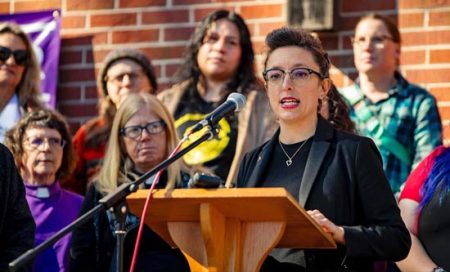Smith-McDowell House Dives Deep

Museum pieces together stories of those held captive by the Smith and McDowell families.
Though well over a hundred people were enslaved by the Smith and McDowell families—many of them worked in the facility then known as Buck House, and on its grounds on a day-to-day basis—very little is known about their individual identities.
Enslaved African Americans were not allowed to learn to read or write, and white historians rarely recorded their stories or their names. The census only records the sex and age of enslaved people and, most often, their names were only written if/when they were sold or inherited.
The museum has posted an online exhibit which lists the people whose names have been uncovered. They were enslaved by the James M. Smith or William W. and Sarah Lucinda Smith McDowell families – and, in some cases, both. Their names were found in James M. Smith’s last will and testament, in bills of sale archived at the Western North Carolina Historical Association or Buncombe County Register of Deeds, in newspaper advertisements, and in court records.
The exhibit contains newspaper clippings and copies of deeds, personal letters, and other records.
Visit this exhibit online at www.wnchistory.org/deep-dive.
By utilizing documentary, archaeological, and oral source material, the museum will continue to work to piece together stories of enslaved individuals held captive by the Smith and McDowell families.
Here is the story of one of the enslaved, George Avery
In 1865, George Avery was a 19-year-old blacksmith enslaved by the McDowell family. It is likely he was born in to slavery, given his young age.
McDowell family stories say that George was freed by William McDowell in April 1865, who realized the Confederacy was going to fall. McDowell allegedly advised Avery to join the Union Army so that he could claim a pension. However, we also know that 40 ex-slaves joined the liberating army when they left Asheville and marched to Greenville, TN, and it is likely that George Avery was one of these men. George joined the Company D, 40 Division, US Colored Troops, on April 29, 1865 in Greenville, TN, and signed his volunteer enlistment papers with an “X”.
On his return from the war one year later, the McDowells are said to have given him land and lumber with which to build a house and a job as caretaker of the South Asheville Cemetery on Dalton Street. However, based on land deeds registered with the Buncombe County Register of Deeds, it appears that George Avery was not given legal title to any of the McDowells’ land until 1890, at which time he paid $120 for a small tract.
The cemetery, which was also located on land owned by the McDowells, was first used as a burial place for the people they and their families enslaved. Avery dug graves at the cost of $1 to the family of the deceased and looked after the site until his own death in 1938 at the age of 94.






